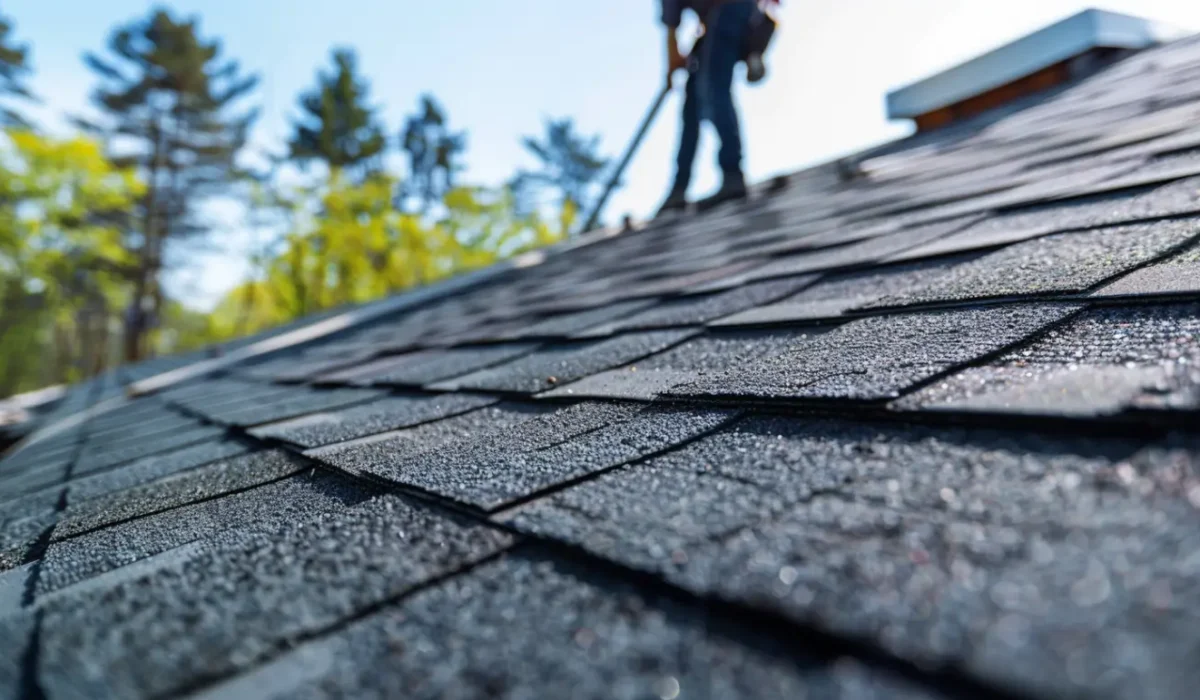Your roof is your home’s first line of defense against harsh weather, UV rays, and moisture infiltration. But over time, even the most durable roof materials can break down. Ignoring early signs of roof deterioration can lead to bigger issues like water damage, structural concerns, and high repair costs. Knowing the warning signs can help you take proactive steps before it’s too late.
Curling, Cracked, or Missing Shingles
One of the most common signs your roof may be nearing the end of its lifespan is the condition of its shingles. Curling shingles—either with edges that turn upward or shingles that appear concave—are a clear indicator of weather fatigue or poor ventilation. Cracked shingles, especially after a storm, signal brittleness and potential underlying damage. If you notice entire shingles missing, your roof’s protective barrier is already compromised, and replacement may be more cost-effective than ongoing repairs.
Granule Loss and Bald Spots
Have you seen coarse, sand-like granules in your gutters or near downspouts? Shingles shed granules as they age, and these granules protect your roof from UV damage and fire. If your shingles are bald or have uneven coloration, it’s a sign they’re deteriorating. Without these protective layers, your roof becomes more vulnerable to leaks, heat absorption, and faster wear.
Frequent Leaks and Interior Water Stains
A leaky roof doesn’t always present as a dripping ceiling. Sometimes, you’ll see faint yellow or brown water stains on your walls or ceilings. These are often caused by slow leaks or water seeping through compromised areas. If leaks are recurring or appearing in different rooms, it may not be an isolated issue — your entire roof system could be failing.
Sagging Rooflines
Take a step back from your home and examine the roofline. If you notice dips, curves, or visible sagging, it’s a serious structural red flag. Sagging can result from long-term water damage, deteriorated decking, or too much weight from layers of old shingles. This issue requires immediate professional evaluation, as it can pose safety hazards.
Mold, Moss, or Algae Growth
While some moss or algae growth may seem like a cosmetic issue, it can signal moisture retention on your roof. In humid climates or shaded areas, trapped moisture creates a breeding ground for biological growth. Over time, moss can lift shingles, allow water to infiltrate, and accelerate decay. If moss is widespread, it could be a sign your roof isn’t draining properly and needs to be replaced.
Increased Energy Bills
If your heating and cooling bills have been rising unexpectedly, your roof’s insulation performance could be declining. Damaged or aging roofs lose their ability to regulate indoor temperature effectively. Heat may escape during the winter or penetrate during the summer, forcing your HVAC system to work harder. Replacing the roof with energy-efficient materials can restore comfort and cut costs.
Roof Age and Warranties
Roofs don’t last forever. Asphalt shingle roofs typically last 20 to 25 years. If your roof is approaching or exceeding that age, it may be time to plan for a replacement — even if it appears to be in decent shape. Manufacturers like Owens Corning offer product warranties, but these usually depend on proper installation and routine maintenance.
Our team at KangaRoof in Keller, TX, holds top-tier certifications such as OC Preferred and CertainTeed Master Shingle Applicator. We understand what quality looks like — and when replacement is your best option.
Storm and Hail Damage
Living in Texas means being no stranger to hailstorms, high winds, and heavy rains. After a severe weather event, inspect your roof for signs of impact — dents, granule loss, or lifted flashing. Even small hail can weaken your shingles and lead to premature failure. If you’ve had more than one major storm season since your last roof check, it may be time to assess the damage professionally.
Your Roofing Contractor Recommends It
Reputable contractors won’t push a new roof unless it’s truly needed. But if a trusted professional examines your roof and advises that it’s beyond repair, it’s wise to listen. An experienced contractor will provide photos, inspection reports, and help you compare the cost of ongoing repairs versus a full replacement.
Read also our blog: Choosing the Right Shingle Color for Your Home
